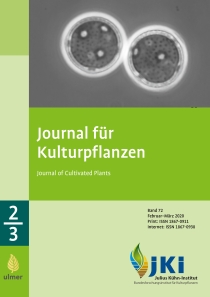A bioremediation process based on the application of <em>Rhizobium</em> sp. I3 and Ramie (<em>Boehmeria nivea</em> L.) in lead contaminated soils
DOI:
https://doi.org/10.5073/JfK.2020.02-03.02Keywords:
Ramie, lead, phytoremediation, bioremediation, soilAbstract
Environmental pollution by heavy metals, especially lead (Pb), is one of the most serious environmental problems. The existence of excessive Pb in the soil will cause soil degradation and threaten the ecosystem of life on the land, therefore remediation needs to be done. Ramie (Boehmeria nivea L.) is known to have hyperaccumulatory qualities. Therefore, it can be used as bioremediation agent. This study was done to determine the effect of inorganic fertilizers, Rhizobium sp. I3 and cow manure in an effort to reduce soil Pb levels with Ramie plants. The research was conducted from May to November 2017 in Karanganyar Regency, Central Java Province, Indonesia in paddy fields directly adjacent to the textile industry contaminated by Pb. The experimental design was factorial with a Completely Randomized Block Design as the based design, consisting of 3 factors: inorganic fertilizer (P0: without inorganic fertilizer, P1: with inorganic fertilizer), bioremediation agents (B0: without bioremediation agents, B1: with Rhizobium sp. I3, B2: with cow manure), and plant (T0: without plant, T1: with Ramie). The experiment was repeated three times. Data were analyzed by statistical analysis using ANOVA significance level of 95% continued by T-test or Duncan Multiple Range Test, significance level of 95%, as well as a correlation test. The results showed that the combination of inorganic fertilizer + Rhizobium sp. I3 + Ramie (P1B1T1) had the highest Pb absorbtion of 29.98 μg g–1 (45% higher than control) and was able to reduce soil Pb levels by 9.29 μg g–1 from initial soil Pb level. P1B1T1 had the most effective bioremediation value of 60.35%, a difference of 12.22% in comparison to the control (48.13%). Bioremediation using Rhizobium sp. I3 was better than using cow manure; because it can reduce soil Pb levels in the soil with the highest effectiveness of bioremediation.
Published
Issue
Section
License
The content of the journal is licensed under the Creative Commons Attribution 4.0 License. Any user is free to share and adapt (remix, transform, build upon) the content as long as the original publication is attributed (authors, title, year, journal, issue, pages).
The copyright of the published work remains with the authors. The authors grant the Journal of Cultivated Plants, the Julius Kühn-Institut and the OpenAgrar repository the non-exclusive right to distribute and exploit the work.







